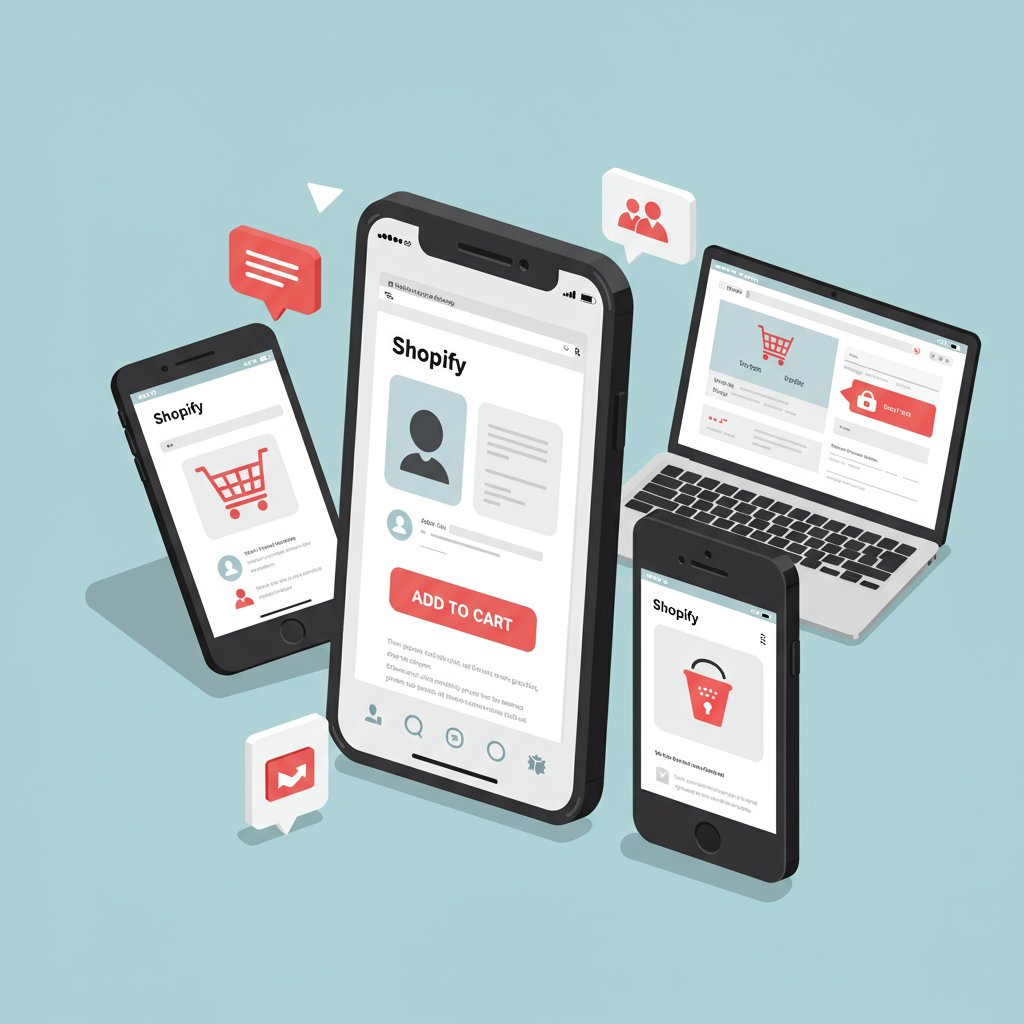Why designing for the small screen first is your biggest opportunity for e-commerce growth.
Hello fellow Shopify merchants! Today, I want to talk about something incredibly vital for your online success: designing a mobile-first Shopify store.
In our increasingly connected world, the smartphone isn’t just a device; it’s often the primary gateway to the internet for many of your potential customers.
Think about your own habits. How often do you browse, research, or even make purchases directly from your phone? My guess is, quite a lot.
This shift in consumer behavior means that if your Shopify store isn’t optimized for mobile, you’re not just missing an opportunity; you’re actively deterring a significant portion of your audience.
A mobile-first approach isn’t just about making your desktop site shrink to fit a smaller screen. It’s about designing for the smallest screen first, then progressively enhancing for larger ones.
I believe this philosophy forces you to prioritize content, streamline user experience, and focus on what truly matters to your customer.
So, where do we begin? The foundation of any great Shopify store, especially a mobile-first one, lies in its theme.
When selecting a theme from the Shopify Theme Store, always look for those explicitly advertised as “responsive” or “mobile-friendly.”
However, don’t just take their word for it. Test the demo on your own phone, and ideally, on a few different devices if you can.
Pay close attention to navigation. On mobile, complex menus are a nightmare. I always recommend themes that utilize a clean, intuitive hamburger menu.
Ensure that the menu items are clearly labeled and easy to tap with a thumb. Large, tappable areas are crucial for a good mobile experience.
Next, let’s talk about speed. Mobile users are notoriously impatient. A slow-loading site will lead to high bounce rates, regardless of how beautiful your products are.
Image optimization is paramount here. I always compress my images before uploading them to Shopify. Tools like TinyPNG or Shopify’s built-in optimization can help immensely.
Don’t forget about image dimensions. Uploading unnecessarily large images that then get scaled down by the browser wastes bandwidth and slows down your site.
Beyond images, consider the number of apps you’re using. While Shopify apps are fantastic, too many can bloat your site and impact loading times.
I recommend regularly auditing your installed apps and removing any that aren’t essential or are rarely used.
Product pages are the heart of your e-commerce store. On mobile, these need to be incredibly concise and persuasive.
Focus on high-quality product images that are zoomable and load quickly. A short, punchy description highlighting key benefits works best.
Your “Add to Cart” button needs to be prominent, easy to find, and ideally, sticky as the user scrolls. This reduces friction in the buying process.
The checkout process is where many mobile sales are lost. My advice? Make it as frictionless as humanly possible.
Enable guest checkout, offer popular mobile payment options like Shop Pay, Apple Pay, or Google Pay, and ensure form fields are large and easy to fill.
Auto-fill features for addresses are a huge plus. Every tap, every piece of information a customer has to manually enter, increases the chance of abandonment.
After you’ve set up your store, the work isn’t over. Regular testing is non-negotiable.
Use Google’s Mobile-Friendly Test tool, and more importantly, test your store on actual mobile devices – your own, friends’, family’s.
Pay attention to how elements render, how easy it is to navigate, and if there are any awkward overlaps or tiny text.
I also highly recommend diving into your Shopify analytics. Look at your mobile conversion rates versus desktop.
Identify pages with high mobile bounce rates. This data will tell you exactly where your mobile experience might be falling short.
Iteration is key. Based on your testing and analytics, make small, incremental improvements. It’s an ongoing process, not a one-time fix.
Consider implementing a Progressive Web App (PWA) if your budget allows. PWAs offer an app-like experience directly from the browser, including offline capabilities and push notifications.
For your blog content, exploring Accelerated Mobile Pages (AMP) can significantly speed up load times for articles accessed via search engines.
Finally, don’t forget about voice search optimization. As smart assistants become more common, people are increasingly using voice to find products.
Think about how customers might verbally ask for your products and incorporate those natural language phrases into your product descriptions and SEO.
Designing a mobile-first Shopify store isn’t just a trend; it’s a fundamental requirement for success in today’s e-commerce landscape.
By prioritizing the mobile experience, you’re not just making your store accessible; you’re building trust, improving conversion rates, and ultimately, growing your business.
What are your thoughts on mobile-first design for e-commerce? I’d love to hear your experiences and challenges!
I truly believe that investing time and effort into this area will yield significant returns for your Shopify business.






